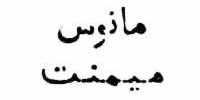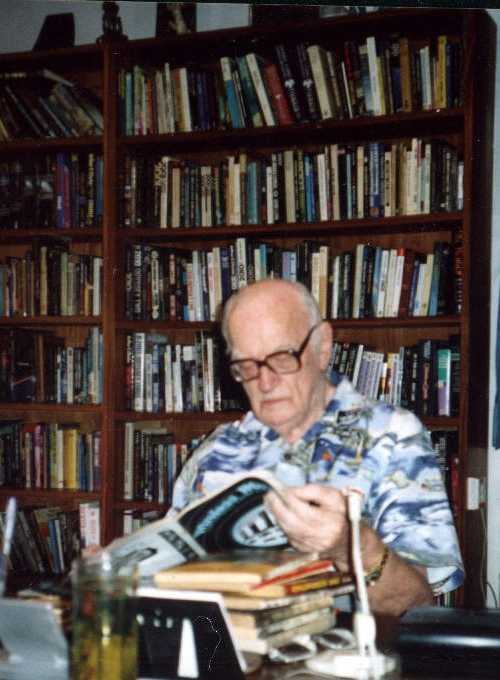| SPECIFICATIONS | |
| Denomination | One Rupee |
| Alloy | Silver Ag |
| Type | Struck |
| Diameter | 25.4 mm |
| Thickness | mm |
| Weight Legal | 11.444 gms |
| Weight | 11.97 gms |
| Shape | Round |
| Edge | Plain |
| DieAxis | O° |
| Mint | Surat |


The treasure coins in the Lakdiva coin
collection were Exhibited at the
Pennsylvania Association of Numismatists
PAN Coin Show held from 2003 October 25th to 26th in Greater Pittsburgh, USA.
|

|

| ||||||||||||||||||||||||
| Bombay KM#300 | ||||||||||||||||||||||||||
Obverse : As found. Covered by coral.
Reverse : AU condition Islamic text with Year 1113 AH. A part of another
coin appears to be stuck on right hand side, and probably why the coin is
4.6% heavier than legal weight.
Silver rupee minted in Surat (near Bombay) of the Mugal Empire, issued by Muhammad Aurangzeb Alamgir (ruled 1658-1707), with Islamic date 1113 AH (1701).
The coin pictured above has provenance from the collection of Mendel Peterson with his tag indicating Great Basses Reef - South Coast of Ceylon - 1703 - Large clump - Arthur Clarke
The uncleaned coin was scanned at 300dpi and the images are displayed
at 250dpi.
The AU/uncleaned condition coin was purchased in 2000 February on ebay.
|

|

| ||||||||||||||||||||||||
|
Aurangzeb rule of 
|

| ||||||||||||||||||||||||
| Brown #2985 ; Bombay KM#300 | ||||||||||||||||||||||||||
Obverse : On the center right of coin at 3 O'clock is 46
the ye, and the mint mark
four filled circles (dots) around a thin cross which has a ring at center at the middle left at 9 O'clock
Reverse : Islamic text. with Year 1113 AH.
I could see detail in parts of the surface and I have another uncleaned coin in my collection. It was a real thrill for me to discover the clear XF detail when I washed out the thin layer of coral in 2000 October, using Acid The cleaned coin with about 0.4 gms of coral dissolved out is 7.4% under than legal weight.
This Coin was given in the 1960's to Rajah Wickremesinhe by Mike Wilson the co-discoverer of the Wreck, and was obtained from him in 2000 August.
Obverse
| Arabic | transcript | translation |
 | gir-Alam | grasper-universe |
 | 1113 | 1113 |

| kzib-Aurang | adorner-throne |

| Shar | ruler |
| monir bedr cho zad | shining moon-full like minted | |
| sikkah | coin | |
 | jehan dar | world in |
Reverse
| Arabic | transcript | translation |

| manus | associated-with |
| maimanat | prosperity | |


| Four dots around Cross 46 | Mint Mark 46 |

| julus sanat | regnal year |
| zuriba | struck-at | |
| Surat | Surat |
Arabic is written and read from right to left from bottom to top of page.
Descended from Jenghiz Khan, Akbar the Great reigned from 1556 CE, when he was thirteen. During this time he conquered large part of India, and by his wise toleration he built a lasting Empire despite all the diversities of race and religion. Following him as Moghul Emperors was his son Jehangir in 1605 CE and grandson Shar Jahan in 1628 CE who built the Taj Mahal mausoleum for his wife Mumtaz Mahal.
In 1659 CE (1069 A.H.) his son Shar Aurangzib 'Alamgir (``throne-adorner, universe-grasper'') ascended to the throne. In this reign the Moghul Empire reached its greatest territorial extent. At the age of almost ninety, when Aurangzib died in 1707 CE (1118 A.H.) religious intolerance had undermined Akbar's policy for unity and the Empire disintegrated in a short time.
Aurangzib used 47 different mints and introduced a new style of coin, which lasted through end of Moghul Period. The horizontal on the obverse of the coin are formed, the upper one by Shar (as is usual) and the lower by sikkah As long as all the words got on the coin they were not too concerned about the order of the words in the couplet.
During the 48 year rule of Aurangzib the Surat Mint alone issued over 85 varieties rupee coins listed in Brown's Catalog of coins in the Lucknow Museum. Since Anno Hegirea (A.H.) doesn't change at the same time as the regnal year, most years have two varieties. The order of rows and the location of the A.H. date change a few times over this period.
| Two types of such Mint marks appear on 1113/46. Brown's #193 (cross around central circle with 4 filled dots in the quadrants) is used on (#2985) the A.H. 1113 of reginal year 46 of the greatbasses wreck coin. | 
|
The coins appeared to have been packed in coir sacks with about 1000 coins each and perhaps packed several sacks to a wood chest. The coir bags held together long enough for the silver coins to have been concreted solidly together, so that when the sacks rotted away, the coins remained in twenty five pound lumps in the shape of the sack. The coins in the middle of the lumps were in perfect mint condition. The inner side of the outer coins were similarly protected as was the reverse of the coin shown above.
The Smithsonian institute was donated a 1,000 rupee lump soon after the discovery of the unrecorded wreck on the Great Basses Reef - off the south east coast of Lanka.
|
Accession record 239761 dated December
7, 1961 describes a gift made to the Smithsonian by Arthur C. Clarke.
as 1 cluster of approx. 1000 silver rupees dated 1702, found off
Great Basses Reef, Ceylon by Mr. Mike Wilson.
This Lump of coin was last shown in public at the Aditi - The Monies of India exhibition at the National Museum of American History from 1985 October 24, till 1986 April 24. Thousand coins as shown on right in loosely sacked lump is about a 8 inch cube | 
© Smithsonian |
A lump of thousand coins shown below in loosely sacked elongated lump

The lump is currently with Carl Fismer,
Spanish Main Treasure Company,
and is on public display in Osprey, Florida.
A lump of six hundred coins was gifted by Arthur Clarke
to Late Mendel
Peterson of the Smithsonian Institution
in recognition of his research
assistance to Clarke regarding the treasure.
Shown below is few mint condition coins from the center of the lump.

The broken up lump was purchased by Carl Fismer
who with innovative
marketing as the Taj Mahal Treasure,
claims to have sold few
individual coins for as much as $1300.
Sir Arthur C. Clarke's most famous prediction on the future
is his proposal of geostationary satellite communications
published in the Wireless World magazine in 1945.
Not considered seriously at the time it became a reality within 20 years
with the launching on 1965 April 6th of Intelsat I Early Bird
the first commercial geostationary communication satellite.

Sir Arthur C Clarke at his home in Colombo Sri Lanka
is seen in May
2003 reading a copy of February 1945
Wireless World
in which he first suggested the idea.
Piled up is my
collection of 1940 and 1950's Pulp Magazines with all of his first and best.